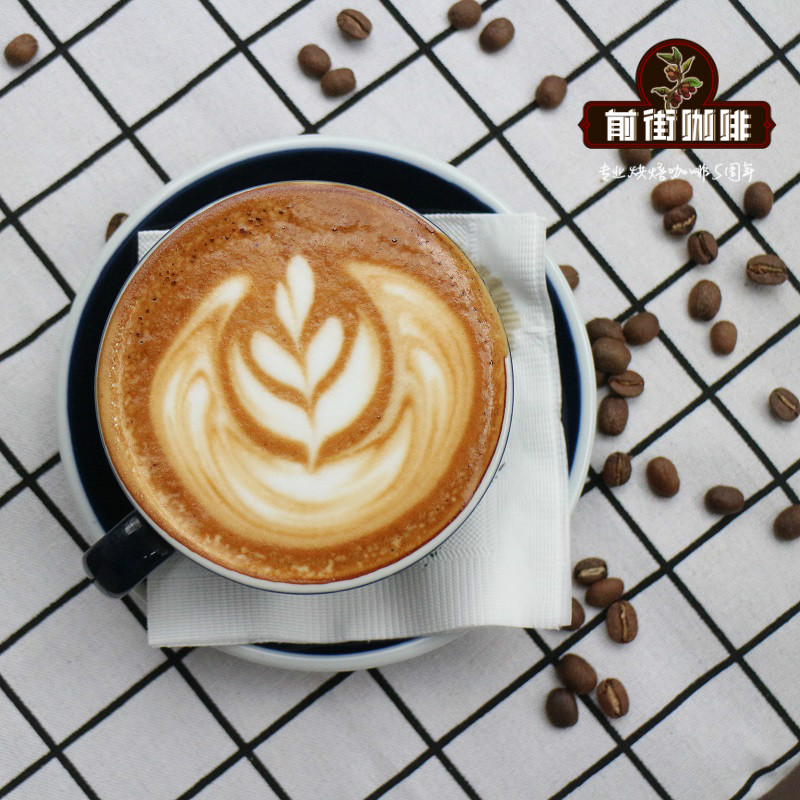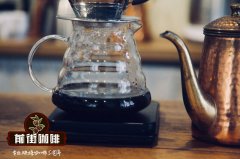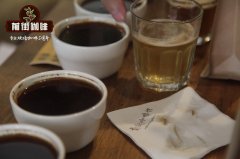Coffee drink classification explanation: do you really know what you are drinking?

Professional coffee knowledge exchange more coffee bean information please follow the coffee workshop (Wechat official account cafe_style)
With the popularity of coffee in China, people are more and more exposed to this drink. But what kind of coffee do we usually drink? Do you have a clear concept? Today we will introduce the classification of coffee drinks and talk about the fancy coffee that you drink most often.
Classification and definition belong to the category of artificial stipulation, there is no distinction between right and wrong, only the difference between convenience or not. So there is no need to worry about whether the definition and classification here are correct, this is just the environment we set for further analysis. So don't dwell on other different definitions in the analysis here, it will only add confusion and annoyance.
We divide all coffee drinks into three main categories:
I. basic coffee
Definition: the coffee made by grinding the coffee beans into powder and using the corresponding production tools is called "basic coffee".
Basic coffee can be divided into three categories:
1. Arabica coffee: Arabica coffee can also be divided into two categories: Arabica coffee and Turkish coffee. The former is spiced, while the latter is unspiced.
2. Drip filter coffee: after the drinking of coffee spread to Europe, Europeans were disgusted with the dregs in the coffee, so they tried their best to filter them out. But there is no difference in their production. They are all the result of coffee powder soaking in hot water under atmospheric pressure. This kind of coffee used to be the most popular, with a history of more than 300 years, and many different production tools have been derived from a wide range of popularity. Each has its own characteristics and appropriate methods of use.
3. Espresso: this is a new coffee drink that is completely different from the former two. The biggest difference is that it increases the pressure. And this makes this kind of coffee taste, and in the production principle has a huge difference, even can be said to be completely different.
Fancy coffee
Definition: in the basic coffee, by adding certain ingredients, and after a certain preparation, the coffee drink is called fancy coffee.
We divided the fancy coffee into two categories.
1. Traditional (standard) fancy coffee
This kind of fancy coffee has two main characteristics, one is that it has been around for a long time, usually for decades or even hundreds of years. After such a long time, I believe that people have made many attempts, and the way of production handed down should be the "best" way of production. It is difficult to improve and do better.
Another feature is that it spreads widely, and most customers have a certain concept of all kinds of coffee drinks, from appearance to taste. So after ordering a cup of coffee, he must be looking forward to the familiar taste. If the production of the store is different from the traditional way, and there is a big difference in taste, then it will lead to customer dissatisfaction. This violates the basic principle of "service industry".
2. Non-standard fancy coffee
There is no certainty about the preparation and taste of this kind of fancy coffee, which most people do not understand. Therefore, there are no special requirements, each store can do according to its own understanding. It won't affect the customer.
Third, iced coffee
Definition: all iced coffee drinks. Coffee without ice drops, which is a special type of coffee, does not contain any of the coffee drinks mentioned here.
Now that we have defined "fancy coffee", we can start talking about fancy coffee. In fact, the problem of fancy coffee is not a technical problem, but almost a business problem. So what we are going to talk about is also business issues. Please focus your attention on business issues.
1. The basic types of coffee for making fancy coffee:
To make fancy coffee, there used to be some fancy coffee made from dripping coffee. The most typical is French milk coffee, which the French used to have for breakfast, also known as "Ole Coffee" or "Lady Coffee", that is, Cafe au Lait.
This fancy coffee is made with a pot of drip-filtered coffee and a pot of hot milk poured into a flat bowl at the same time. The fancy coffee prepared at the ratio of 1:1 is called Olei Coffee. The French have been drinking this kind of coffee for hundreds of years, but after espresso, especially lattes, the "Ole Coffee" in all French cafes has become a "latte". Because although the milk in the latte is several times that of the coffee, the strong smell of the coffee makes the latte completely squeeze Ole coffee out of all the cafes in France and replace it.
If French cafes give up the Ole coffee that the French have drunk for hundreds of years and replace it with lattes, it means that lattes have an unusual advantage. At the same time, it also illustrates a problem, that is, fancy coffee made from drip coffee has finally been announced to be retired from the stage of history.
From this, we can know that the basic coffee for making fancy coffee is espresso. I'm afraid it will be difficult to find fancy coffee made with drip coffee in the future.
2. Traditional fancy coffee and non-standard fancy coffee
The reason why we want to distinguish between "traditional fancy coffee" and "non-standard fancy coffee" is mainly from the perspective of business management. Because the coffee shop belongs to the "catering service industry", its management principle is to meet the needs of customers.
If a customer orders a cup of traditional fancy coffee, he will have a specific expectation of the cup of coffee he will get. Including appearance and taste. Different practices and different tastes may lead to customer dissatisfaction, thus affecting the results of customer experience. This is a very big problem for the catering industry.
Traditional fancy coffee has two characteristics. One is that it has been spread for a long time. After many attempts and comparisons, it should be the best way to prepare it. The second is the wide spread, most people have a certain concept of the taste and appearance of these coffee, there are certain expectations.
Some people may say that we are a small place, there are no people from abroad, or no one knows anything about coffee. Even in this case, we still have to follow the traditional method of making fancy coffee. Because you want to set standards for the local people to know what kind of coffee should taste like. Only in this way, customers will have a different understanding of different coffee drinks. Otherwise, the customer can't find the coffee drink he likes, so he has to give up and stop thinking about drinking coffee.
Maybe it's because the taste of coffee is very strong, and different coffee tastes vary greatly. So coffee drinks should not be changed frequently and tried at will. Only when they first learn about coffee will people try different kinds of coffee and compare them in order to find the most suitable coffee for them. Although people may want to drink different kinds of coffee in different environments, such as a cappuccino or latte for breakfast, people usually have a certain coffee drinking habit for most of the day. It's not easy to break.
Therefore, we should generally set certain standards in the industry to let customers understand and find the most suitable coffee drink. In this way, wherever they go, they will habitually order a cup of coffee that suits him. This kind of consumption habit is a stable and habitual consumption behavior. It is also the customer consumption environment for the survival of our cafe.
If someone thinks they have a better way to make these traditional fancy coffees, it doesn't limit you to do it. But it is recommended that you add a modifier before or after the name of this coffee to let customers know that this is a coffee drink that has been adjusted and changed on the original basis. In this way, customers will make their own choices, whether they want traditional drinks or new drinks that have been improved. If a customer wants to try a new coffee drink, even if he doesn't like it, he won't complain.
Or from a commercial point of view, we need each coffee shop to have a unified fancy coffee production standard. In order to let the customer know which coffee is more suitable for him / her.
This issue may be more important in China than in other countries. Because in other countries, most people already have the habit of drinking coffee and know what kind of coffee they like. Even if the preparation of all kinds of fancy coffee is varied, if you are in a hurry and just want to drink a cup of coffee, then customers can also have their own "rules" to choose their favorite coffee.
But for most Chinese people, they don't know much about coffee, let alone which coffee is best for them. So I had to try to find it among the strange names in the vast list of coffee and drinks, but I really didn't know how to choose. Especially when he is busy with his own business and is not in the mood to pay attention to other things, it is really annoying.
Related recommendation: is hand-made coffee really good? Why does coffee smell better than it tastes?
Important Notice :
前街咖啡 FrontStreet Coffee has moved to new addredd:
FrontStreet Coffee Address: 315,Donghua East Road,GuangZhou
Tel:020 38364473
- Prev

The difference and comparison between single product and blending: different flavor and taste
Professional coffee knowledge exchange more coffee bean information Please follow the coffee workshop (Wechat official account cafe_style) when coffee lovers buy coffee beans, they may encounter the problem of not knowing whether to buy beans or blending coffee beans at first. Do you have to use single coffee beans for hand-brewed coffee and coffee beans for Italian style? Today, let's talk about individual items again.
- Next

Must-see Coffee terms for Coffee lovers in Chinese and English
Professional coffee knowledge exchange more coffee bean information Please follow the coffee workshop (Wechat official account cafe_style) whether baristas or coffee lovers, if you want to know more about coffee, you must get in touch with coffee knowledge. In the process, we will more or less come across English about coffee terms. The following is to share with you the Chinese-English comparison of coffee terms to help you more
Related
- Beginners will see the "Coffee pull flower" guide!
- What is the difference between ice blog purified milk and ordinary milk coffee?
- Why is the Philippines the largest producer of crops in Liberia?
- For coffee extraction, should the fine powder be retained?
- How does extracted espresso fill pressed powder? How much strength does it take to press the powder?
- How to make jasmine cold extract coffee? Is the jasmine + latte good?
- Will this little toy really make the coffee taste better? How does Lily Drip affect coffee extraction?
- Will the action of slapping the filter cup also affect coffee extraction?
- What's the difference between powder-to-water ratio and powder-to-liquid ratio?
- What is the Ethiopian local species? What does it have to do with Heirloom native species?

